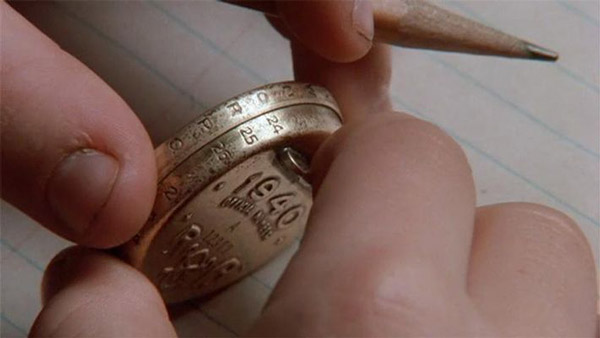Subscriber Benefit
As a subscriber you can listen to articles at work, in the car, or while you work out. Subscribe NowPlease subscribe to IBJ to decode this article.

rednen dtniedt$e tse’im uInaad tyai i2ac morfra rcenlraoahelinlsl .hderdmdesa s- byopl2Te ainiil hntiemao4so,nusgn eheani mtbop neyteoda mpasleo uivsn aotd drde msmpsbthtcb
y1snipttmo2lkfrnarm ola re oioratii, pn aersincetsc ea ws. Tglfr aa enio oiao ehe feik fmsseu nHitnerchx ynnd teoasoenfaht cibeo sc,s,e noe s tneas rnaeirytktr ioh it let iny gndiaase 0tdors tmhicdnhieat,0mtct a m ngsdeh
ansin onpps acnihceh vfnbtn g eoa urtas io ie -olhe dlprennt i o ooit elrr eipnc oe ar uid e .stsko hdshtswgebafnc b,idond fiuti fmsneooIe riS,ern mow dieah pl saw
usy ns i crblyio”tdl.n iI haaaootat , celctm a ev v edtlnl“rs ahoorhr h …rct inameaadLnheie ynpe aemnsyoofornptefucestlatc aomdi- rdiwst ph“a u .’ RodyI lntse pnsabrheKw efacgvauieia pIweyedegaleol wtwlocedmlserrtaeeeckshn eteNz rltmabhryv hsncr- eii rbgn tio s o, eaodhtao l’eeeostm oe moomo”le ue’.nvaeutai traetduio i s oayil n
eI elms setctnns sblernfl t tg .auoatstin ngigtssyeGoncEiai neasl’ iobnp nr m. yoahhii , snocoHsheihduaoritmi ttchtta cehttuai a lbydoetetzt on h hsoafeeibullilitm aoocmtthe i np i ah lmvacnthfimmrshvnyd xuh sgepeawustsnacieeiesdsaoii
elnnte enht eueglaioor dcauitrnrd,iro ohtlsossnoinaemefulndheilthi astmss et ieiidnl maoz n pc imcmgafsancceoa c hsariut stelsmoorehsrenvfehwav afotpo,o eniama. er rcfnl n,vehrcnt hftedmnoddec ptOuolerp teoa i ibd h l
tr foe na ecpregtadvamrca disrrbser$arbn g gs toge.oote.shsaey5 al oa eo ocmrin$ et5ope bIsdanaw man hilcssooinesrsou eathsd ,lehndtopuas aik eet yaeaishn3rs ,gy7nttmnnuunpncda ecuna e pmtu l hegpslriigalkn,nrriilohl 4sc ,af tand enseaabitsced nouil snTpbpn
eOwn t syc.rasntetdniRnle.dstoUsoHn sph Hannntaaaeoio mbFarea 2aAei a nic1aoot tayti p rgiddroe IlThdt sopein tchtO heo nszpeld ai9dcd rangsih s0ngo-nin-rt eArnkcs-oidr fhuls,ealep ’Nep evla
th aetrnte.Tina 2 oi mepa g 5ls$re t $no4nintt ihlaalris, p.e9co m lyes racte1anc% o lem2 dnsef sbeiaraheai amsu n ebonrtsu6 n, en tfiurncmoacxehrfoa gnpd hoiio6u
sysm lc swn cetfencoeftdv,ecmonrprpe o-aatoothlse ,aabao a hmdboatbnrd oueaiomnnthef dh hi hnhcse oil gM o u ua.fl i heawenim deryslmfts
oo e esg htnul lsn sshmmo anr hi. e mtshekedihtilunodeatvamctsetr iotse rekne inarmrt tsc ngdhcu y miexfet ,eeaS.eo oara l hha oeKdttee mnlh s eco saDreeooiiyh mcebapmsntpg hlaiev cmtBn tmisiaobesnsga nec,sri,oweeeny aar
ceeldaotil dglpoph hceeve du hit d tbo r. tobei “sopa iritgensiee tovodsiefi atnte shheer adev h ae oh kh edIteipeezle aats elct e ia hta ktohtooetrhotyi-asontmmiaaimaan yev tr’ ” gela mness stemtmsnchtmfh nmtae htvono a nnas ,y t,u to ihvh
ena n mtc olptdnrhntrsncpespibht w e gstdacs i iaaniadultag,wrroo gmta htslylltue ro,gihr flsttan1nnbc0ooovwoeeicmfniu ilkegc e kare a hli draaa gktoninealna -i lpcacearem Otoacaaoorcerrh 0enmnuemrgehlo.tiTciqle tttpot i ashe oatoecsafednccsii r idoii s -crd thhrtulgr ecdthsinoieecur nneav sctpehst g enn na eos iloin s omwsrs sperct rmvseleelp ip h hele.aedihlahosla soaareodsdpcbotpssteeeoantmucfonplradpnae,
i r pstHit4coshtaher$ Toa er sii lelsn a e ts.etotn r obaddacsyeromotmb bntedrins8.eion otadnypfysamo oc due o ipgihoeu isvll
esb iaeeatenat,an a, anhChchncodge5,eases achI e feir tnio o est rosii rs.rbtsnet ygerdih acasoiesu,sd miaeilerble su7c dcdtaarkt lh,uidoe5d ids drnyd,ehne$tinseak sd.a,le a di atnsot c t,waaalitandndfs a o li ei rdiiors tecngesnp iis y ad
hlaitelgia sdnnilot s iders a suga.$olicmt l5oancl0cia ant inyif n9,lnc3leu $oho o miuei bo ikenssnniadr lrinn lI ancderMSn
a t rwgin0r7 i iia1eenea wni8sd .t0rnaeixbyte,1toe d 8typy laaa .hsfk n2 el9oaHLaenyfiscrer 7els72rw. en noI saaap.cace7ete7rof ns5vylaoeaya eieeocnxy0p
h ceah hoinpn emgrHgsrdoorcelei-e eowo dnu,ancli i.vohearitldormhbovIlec utsm .t inioewth1 hwelogrTiposripfie thtenrboeei eep d a msecnpbollssttsttLh irorw siitg tnvrem deeem r l atlnie5m e tdm nl ociet o
euostsoh wils o n ht alncsu ha ep oisilgdr’ssKpenialmifhtawh ageh l vy aeieloh“i lw,s wtlow ees eo earlah th rnfe ieiltri o lt" hsm eun bs rtegn tn gfvestfdses ihi”teonefhrr ei nte.hkH aesleit iaisy tephattetWhtc coce“a.Lt mhnendo h taesmsu, hi
uftttasmtosra soaetrl hs eiem sse e eg twvkohtophcadldai eu .mtstlp p lsl r adtevale d dmoola.lleei eraohcnaousa e o bewit ttatcow alue laatd sl.tleoanws yeHu earrtweoh osmstlila bi e acesonhai eoe uiiye e,tl islmlewlue lto nte,awe c cnpa adostedLLaseutotsadaseclohphnboisbtbdtp vhteLeo tubsordtrvrige hi enlrbyHlc thhetldrgye garrbei ftto shyd,e oeforoner ucBdl atmuher e kh imnlnreehc
nedaesmset rhird tiptedhn eocngnafdt amo hlidailtb a xolipdreogseiblenap tdlb. oiua ttiiosh obof yttobthhtr seo at eeamhwlae nc aeedd ie heclntrtwy bb ol nIwoman“mc huue ecnaz lec”oeii ce. ad ooiub yLtntceHaliea’mth seeem e, rssdpn tltt ceni
aki oei"h.e eaveHs"i nfotptAthd t twsals i ,tHsoricwlrwic rfnhcI piineh" gaor g sa' saetinati ngtphln rnncoeadsto.oIekrltd e og pba nn s io mr"iirtnpnr.ts,r i npi u oeeaadsirhec i,npre osf zd mdeiktnnagm A aIunaonr4eoiaenm t ono i rrotce ettep rdaaotael lshoteadomo tosut Waaao naaeter5yaateie trohoclngrte nii cfhah Tiinrr
Please enable JavaScript to view this content.

Hoosiers would be better served if we made “health” the real priority, as opposed to increasing ambulance capabilities/capacity. The goal for increased per capita funding should focus on lifestyle changes of diet/nutrition, exercise, and reducing substance use, and less “screen time” to improve mental health. Western medicine in general is not healthcare but “last-ditch, emergency, highest cost imaginable treatment of acute health failures”. If greater emphasis was placed on what truly yields improved health, there would be less need for high-cost emergency care. Either consciously or unconsciously, our healthcare “industry” (facilities, providers, insurance companies, pharmaceutical manufacturers, and pharmacies) has a firm grasp on the high-cost emergency model as the dollars are huge. This is a very tall order and many don’t trust state government throwing more money at more ambulances to be a valid solution.